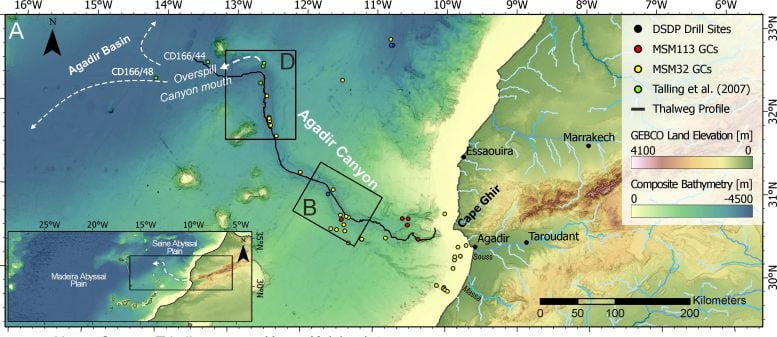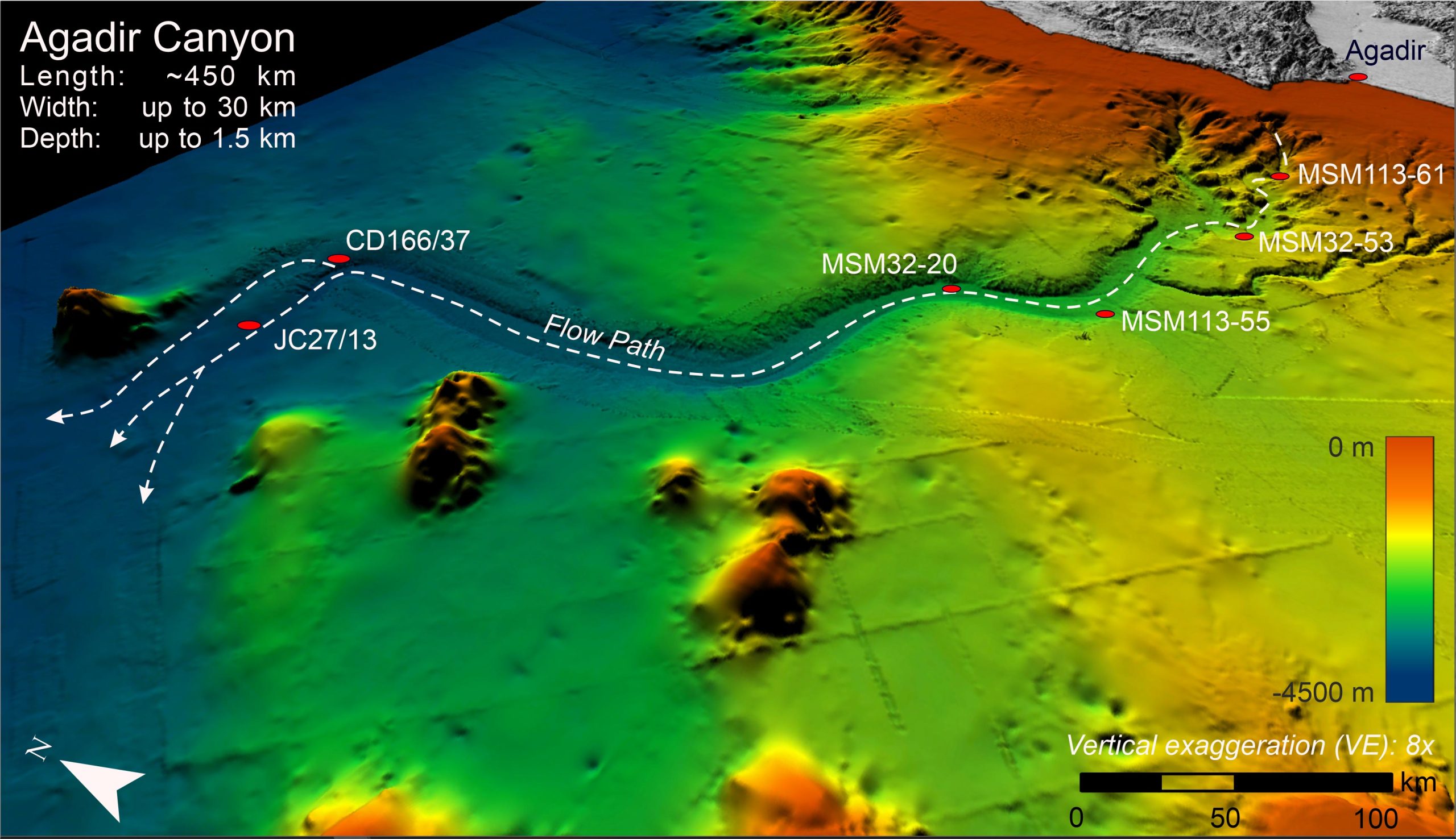An international research team has mapped a giant underwater avalanche that took place nearly 60,000 years ago in the Agadir Canyon.
Researchers at the University of Liverpool have traced the path of a massive underwater avalanche that expanded over 100 times its initial size while wreaking havoc along the Atlantic seabed. This landmark study provides detailed insights into the dynamics and scale of such avalanches, emphasizing their potential threat to crucial underwater infrastructure like internet cables.
Groundbreaking Study on Submarine Cataclysm
New research by the University of Liverpool has revealed how an underwater avalanche grew more than 100 times in size causing a huge trail of destruction as it traveled 2000 km (~1250 miles) across the Atlantic Ocean seafloor off the North West coast of Africa.
In a study published today (August 21) in the journal Unlike a landslide or snow avalanche, underwater avalanches are impossible to see and extremely difficult to measure. However, they are the primary mechanism for moving material such as sediments, nutrients, and pollutants across the surface of the earth and present a significant geohazard to the seafloor infrastructure such as internet cables. The research team analyzed more than 300 core samples from the area taken during research cruises over the last 40 years. This, alongside seismic and bathymetry data, enabled them to map out the giant avalanche. Dr. Stevenson said: “This is the first time anyone has managed to map out an entire individual underwater avalanche of this size and calculate its growth factor.” “What is so interesting is how the event grew from a relatively small start into a huge and devastating submarine avalanche reaching heights of 200 meters as it moved at a speed of about 15 m/s ripping out the sea floor and tearing everything out in its way. “To put it in perspective: that’s an avalanche the size of a skyscraper, moving at more than 40 mph from Liverpool to London, which digs out a trench 30 m deep and 15 km wide destroying everything in its path. Then it spreads across an area larger than the UK burying it under about a metre of sand and mud.” Dr Christoph Bottner, a Marie-Curie research fellow at 
The Unseen Force Beneath the Waves
Insights and Implications of Underwater Avalanche Research




















Discussion about this post